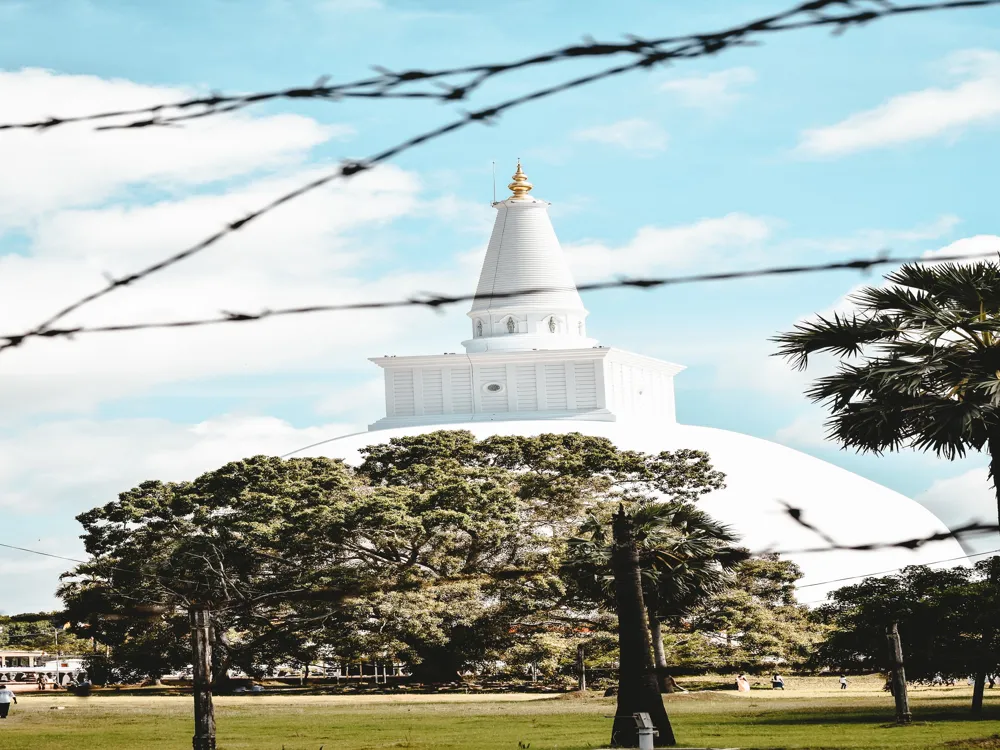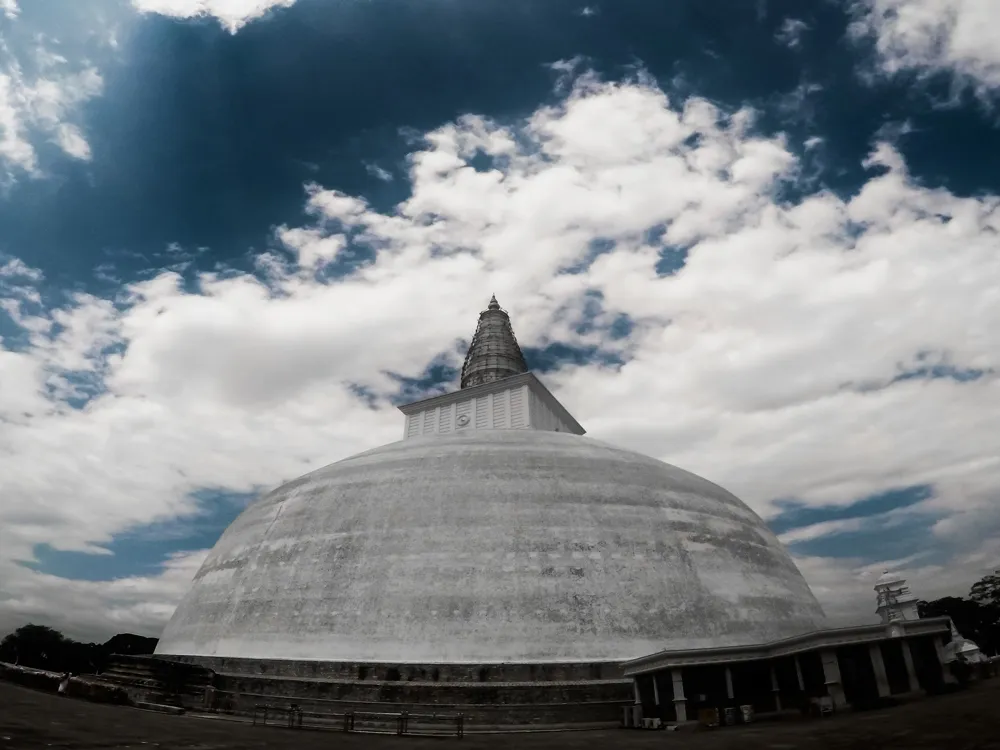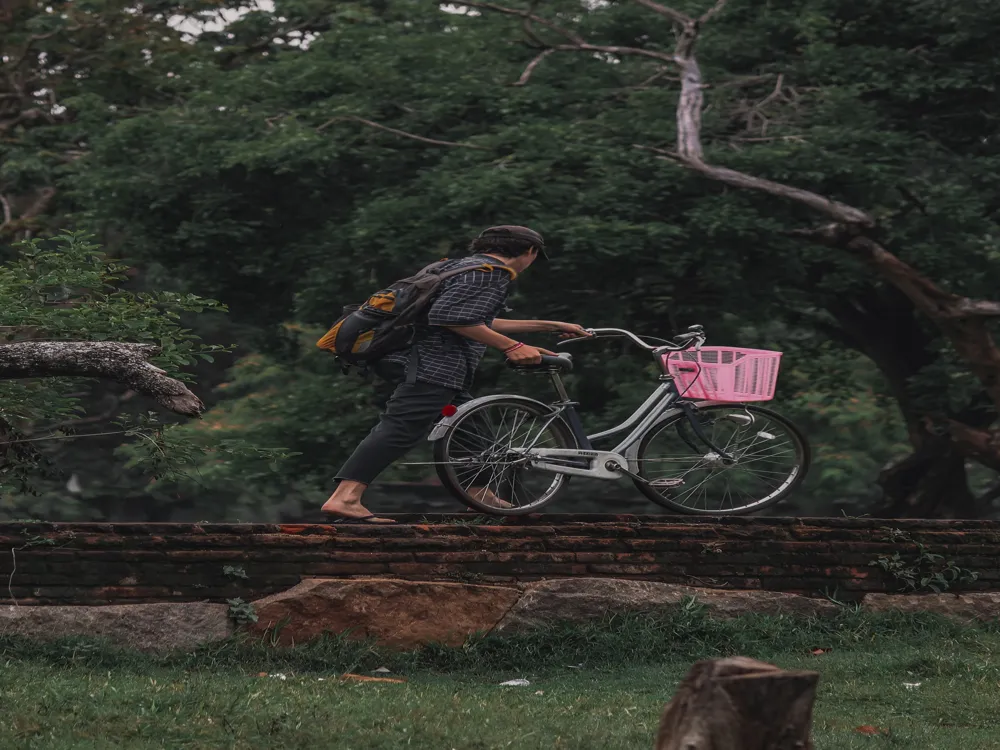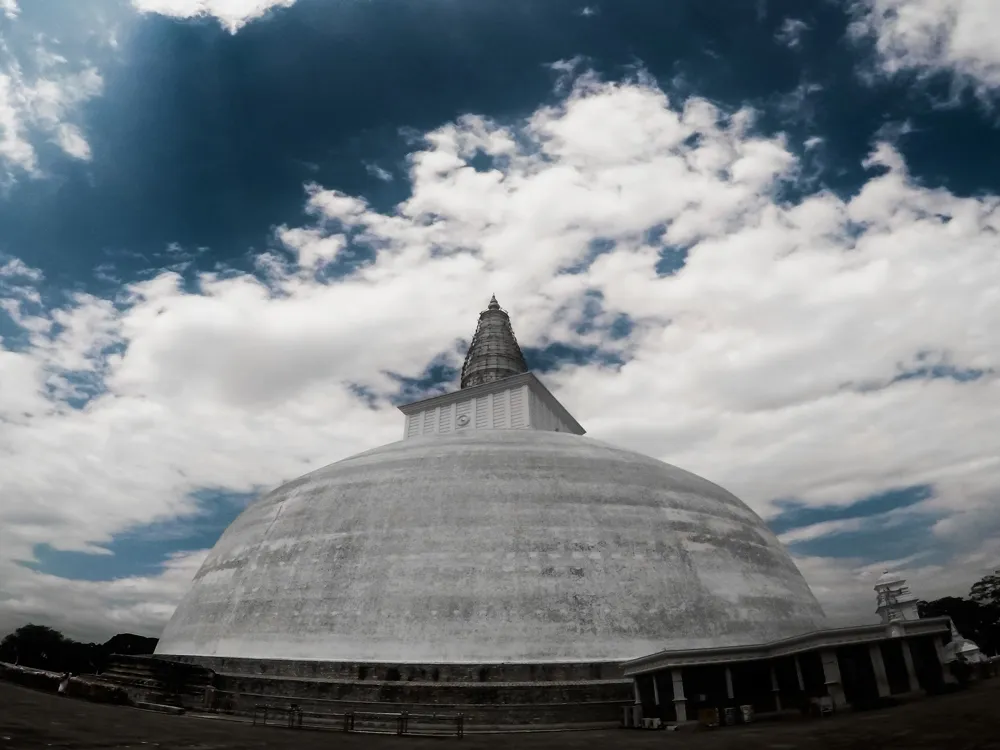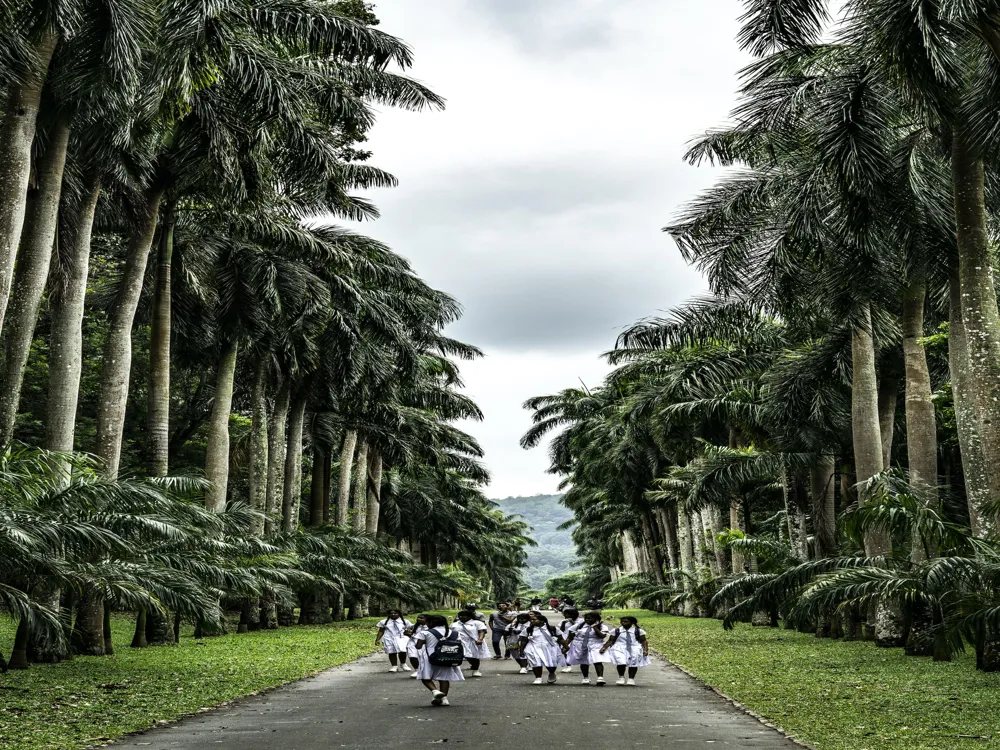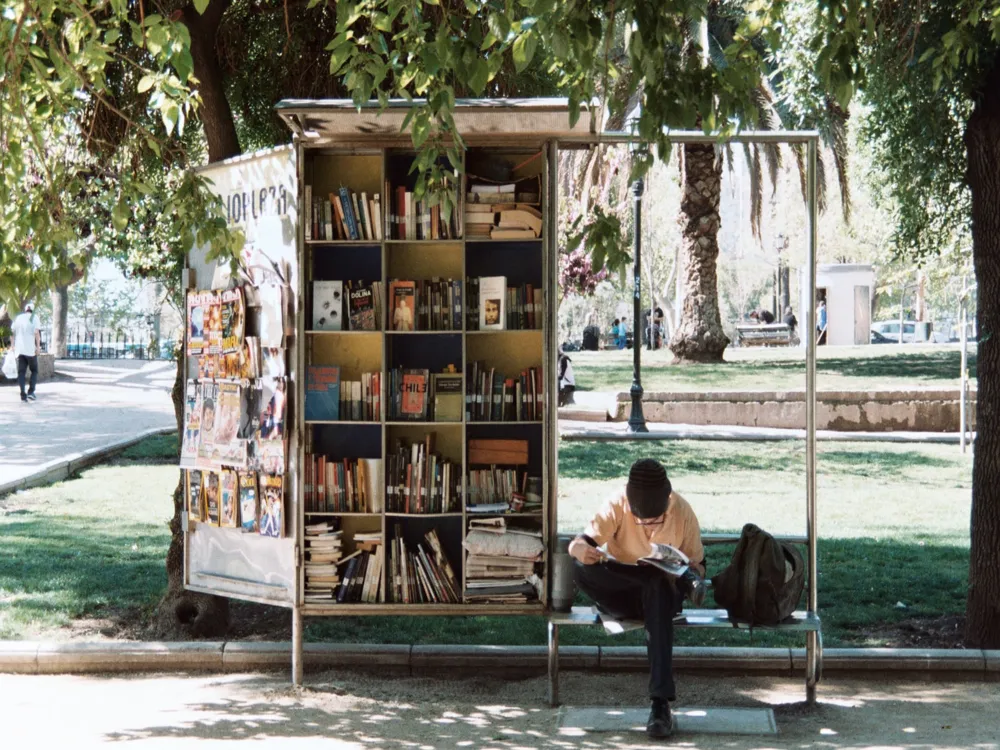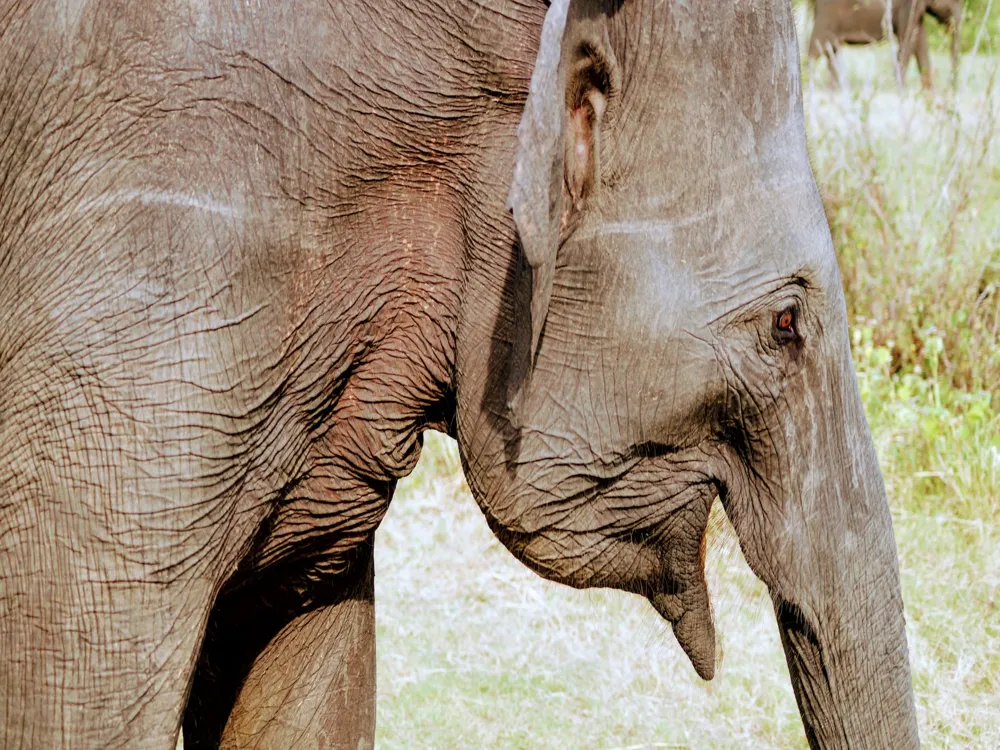The Kadireshan Kovil, nestled in the historic city of Anuradhapura in Sri Lanka, is a testament to the rich cultural and religious heritage of the region. This ancient Hindu temple, dedicated to Lord Shiva, stands as a symbol of the religious diversity and architectural grandeur of Anuradhapura. The temple's history dates back centuries, intertwining with the stories of kings, devotees, and the evolution of Hinduism in Sri Lanka. Visiting the Kadireshan Kovil is like stepping into a bygone era. The temple's architecture reflects a unique blend of Dravidian and traditional Sri Lankan styles. Intricate carvings, majestic gopurams (tower-like structures), and ornately decorated halls are some of the key features. The temple complex is home to various shrines, each holding significant religious importance and adorned with statues and relics that have survived the test of time. The annual festivals at Kadireshan Kovil, marked by processions and rituals, attract devotees from across the world, adding to its spiritual aura. The temple not only serves as a place of worship but also as a center for cultural and social activities. Traditional dance forms, music, and religious teachings are an integral part of the temple's daily life, making it a vibrant hub for those seeking spiritual and cultural enrichment. The architectural design of Kadireshan Kovil is a remarkable example of the fusion of Dravidian and Sri Lankan temple architecture. The temple, predominantly built from locally sourced materials, stands as a tribute to the skilled artisans of its time. The main sanctum, or garbhagriha, houses the deity and is constructed following traditional Hindu temple architecture principles, ensuring that it aligns with spiritual and astronomical beliefs. The temple's walls are adorned with intricate carvings depicting various deities, legends, and historical events. These carvings not only embellish the temple but also serve as a medium of storytelling, conveying the rich mythology of Hinduism. The gopurams, towering above the temple complex, are intricately carved and painted, symbolizing the celestial abode of the gods. The temple's layout, with its multiple courtyards and subsidiary shrines, creates a sense of progression towards the sacred inner sanctum, guiding devotees on a spiritual journey. The use of color and symbolism in the temple's architecture is also noteworthy. Vibrant hues and geometric patterns are used to represent different aspects of the divine, and the alignment of the structures is designed to harmonize with natural elements, showcasing the ancient knowledge of astrology and Vastu Shastra. Visitors are advised to dress modestly, covering shoulders and legs, as a sign of respect to the temple's religious significance. It's important to follow temple etiquette, including removing shoes before entering and observing silence or speaking softly within the temple premises. While photography may be allowed, it's essential to check for any restrictions, especially around the main deity or during special rituals. Kadireshan Kovil is accessible via multiple modes of transportation. The closest major city is Anuradhapura, which is well-connected by road and rail. Visitors can opt for buses, taxis, or private vehicles to reach the temple. For international travelers, the nearest airport is in Colombo, from where one can take a train, bus, or hire a car to Anuradhapura. Local transportation within Anuradhapura is also readily available to reach the temple. Read More:Overview of Kadireshan Kovil of Anuradhapura
Architecture of Kadireshan Kovil
Tips When Visiting Kadireshan Kovil
Dress Appropriately
Temple Etiquette
Photography Guidelines
How To Reach Kadireshan Kovil
Kadireshan Kovil
Anuradhapura
₹ 21,999 onwards
View anuradhapura Packages
Weather :
Tags : Temple
Entry Fee: : NA
Timings: : NA
Planning a Trip? Ask Your Question
Anuradhapura Travel Packages
View All Packages For Anuradhapura
Top Hotel Collections for Anuradhapura

Private Pool

Luxury Hotels

5-Star Hotels

Pet Friendly
Top Hotels Near Anuradhapura
Other Top Ranking Places In Anuradhapura
View All Places To Visit In anuradhapura
Faq on Anuradhapura
What is Kadireshan Kovil in Anuradhapura?
Kadireshan Kovil is a Hindu temple located in Anuradhapura, Sri Lanka. It is dedicated to Lord Murugan, also known as Kadireshan or Kataragama Deviyo.
What is the significance of Kadireshan Kovil?
Kadireshan Kovil holds religious significance for Hindu devotees, particularly those who worship Lord Murugan. It is believed to be a sacred site where devotees come to seek blessings and fulfill their vows.
How old is Kadireshan Kovil?
The exact age of Kadireshan Kovil is not precisely known, but it is believed to have a long history dating back several centuries, possibly to the ancient Anuradhapura period.
Is Kadireshan Kovil open to visitors?
Yes, Kadireshan Kovil is open to visitors regardless of their religious beliefs. However, visitors are expected to show respect for the religious practices and customs observed at the temple.
What are the main festivals celebrated at Kadireshan Kovil?
The main festivals celebrated at Kadireshan Kovil include Thai Pongal, Navaratri, and Skanda Sashti, which are dedicated to Lord Murugan. These festivals attract large crowds of devotees who participate in various rituals and ceremonies.
View anuradhapura Packages
Weather :
Tags : Temple
Entry Fee: : NA
Timings: : NA
Planning a Trip? Ask Your Question
Anuradhapura Travel Packages
View All Packages For Anuradhapura
Top Hotel Collections for Anuradhapura

Private Pool

Luxury Hotels

5-Star Hotels

Pet Friendly
Top Hotels Near Anuradhapura
Other Top Ranking Places In Anuradhapura
Faq on Anuradhapura
What is Kadireshan Kovil in Anuradhapura?
Kadireshan Kovil is a Hindu temple located in Anuradhapura, Sri Lanka. It is dedicated to Lord Murugan, also known as Kadireshan or Kataragama Deviyo.
What is the significance of Kadireshan Kovil?
Kadireshan Kovil holds religious significance for Hindu devotees, particularly those who worship Lord Murugan. It is believed to be a sacred site where devotees come to seek blessings and fulfill their vows.
How old is Kadireshan Kovil?
The exact age of Kadireshan Kovil is not precisely known, but it is believed to have a long history dating back several centuries, possibly to the ancient Anuradhapura period.
Is Kadireshan Kovil open to visitors?
Yes, Kadireshan Kovil is open to visitors regardless of their religious beliefs. However, visitors are expected to show respect for the religious practices and customs observed at the temple.
What are the main festivals celebrated at Kadireshan Kovil?
The main festivals celebrated at Kadireshan Kovil include Thai Pongal, Navaratri, and Skanda Sashti, which are dedicated to Lord Murugan. These festivals attract large crowds of devotees who participate in various rituals and ceremonies.







